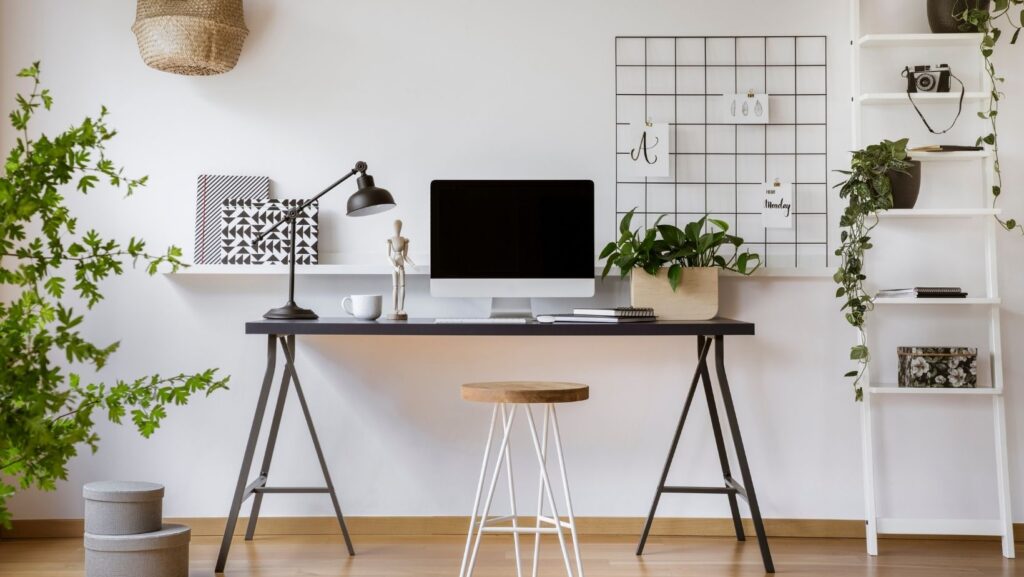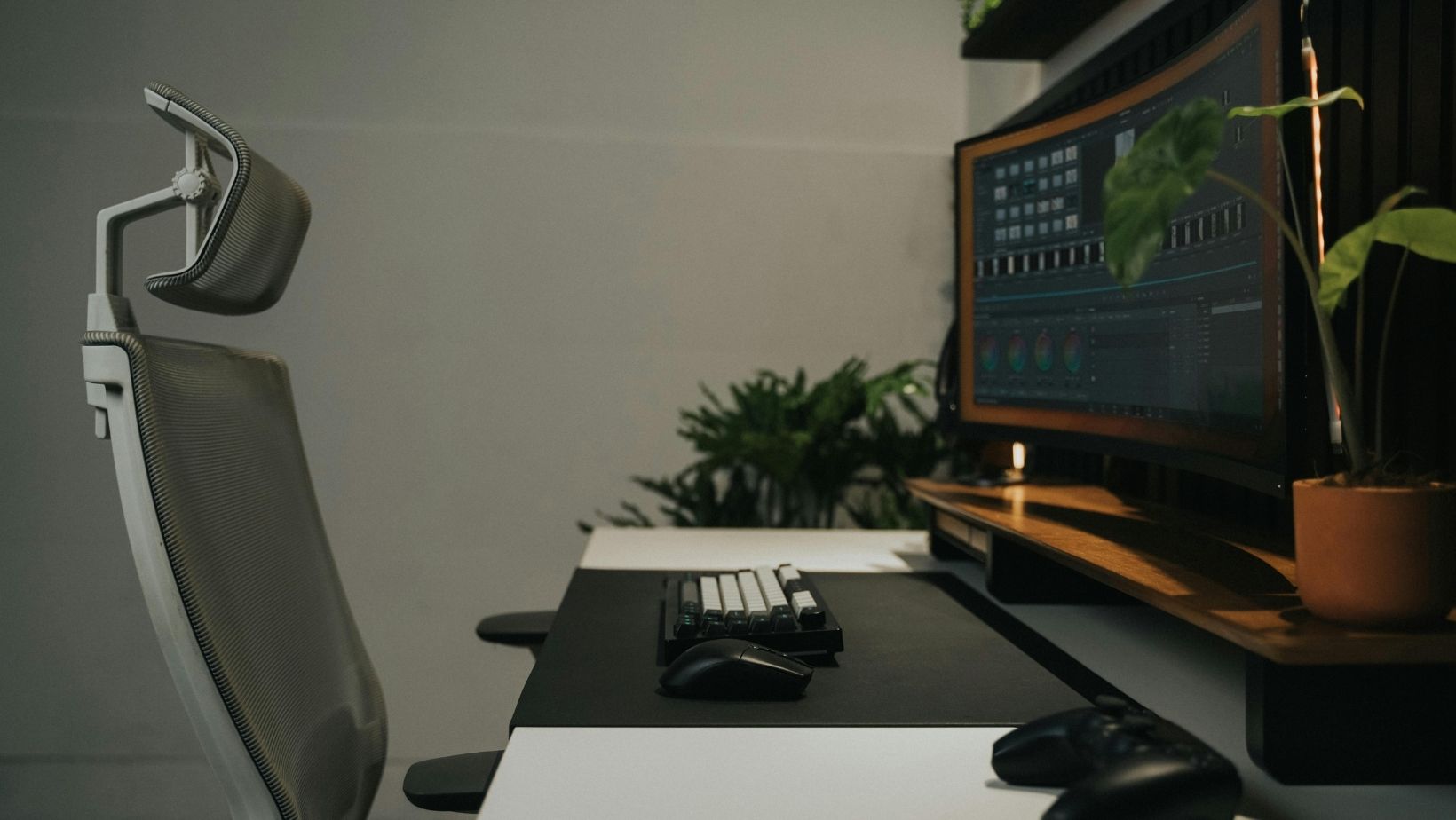Remember when “working from home” meant sitting on your couch with a laptop balanced on a cushion? Yeah, those days are long gone. Whether you’re remote full-time, freelancing, or just need a space to pay bills and answer emails, having a proper home office isn’t a luxury anymore.
But here’s the thing: creating a functional workspace doesn’t mean you need to blow your budget on expensive office furniture and desks. I’ve seen people spend thousands on fancy desks only to realize they hate working in that space, and I’ve also seen incredibly productive offices put together for under $300. The difference is about understanding what you actually need and being smart about where you invest your money.
Start with Your Space (and Be Realistic About It)
Before you start shopping for anything, take a hard look at what you’re working with. Got a whole spare room? Lucky you. Working with a corner of your bedroom? That’s totally doable too. The key is being honest about your space limitations instead of trying to force furniture that’s too big or trying to cram in more than what actually fits.
I learned this lesson the hard way when I bought a beautiful L-shaped desk that looked perfect online, only to discover it completely overwhelmed my small apartment and made the whole room feel cramped. Now I measure everything twice and visualize how it’ll actually look in the space.
Think about your work style too. Are you someone who spreads papers everywhere, or do you work mostly digitally? Do you take a lot of video calls (hello, good lighting and background considerations)? Do you need storage for supplies, or is everything cloud-based? Your answers will guide what furniture pieces actually matter for your setup.
The Desk: Your Office Foundation
Let’s talk about the most important piece: your desk. This is where you’ll spend hours every day, so getting it right matters more than anything else. But “right” doesn’t necessarily mean expensive.
- Size matters more than style. Too small, and you’ll feel cramped and frustrated. Too large, and it’ll dominate your space. A good rule of thumb: you want enough room for your computer, some workspace for writing or spreading out documents, and a spot for your coffee (because let’s be real, that’s essential).
- Height is crucial. Standard desk height is around 29-30 inches, but if you’re particularly tall or short, this might not work for you. Your elbows should be at about 90 degrees when you’re typing. If you find a great desk that’s slightly too high, an adjustable footrest can help. Too low? Desk risers are a cheap fix.
- Corner desks are space-saving champions. If you’re working with limited room, these make use of that awkward corner space that’s hard to decorate anyway. Plus, they often give you more surface area than a traditional rectangular desk would in the same footprint.
Seating: Don’t Cheap Out (But Don’t Go Crazy Either)
Your chair might be the most important furniture investment you make for your home office. You’re going to spend a lot of time in it, and a bad chair will make itself known through back pain, poor posture, and general discomfort that affects your productivity.
That said, you don’t need a $1,000 ergonomic office chair to be comfortable. Look for these key features: adjustable height (non-negotiable), good lumbar support, and armrests that don’t get in your way. The seat should be deep enough that you can sit back against the backrest without feeling like your legs are dangling.
Test before you buy if possible. Even if you’re shopping online, see if you can sit in similar chairs at a store first. Your back will thank you for taking the time to find something that actually fits your body.
Consider your existing furniture. Sometimes a dining chair with a good cushion works better than a cheap “office” chair. I have a friend who uses a comfortable accent chair with a small pillow for lumbar support, and she swears it’s more comfortable than any desk chair she’s tried.
Storage Solutions That Actually Work
Here’s what I wish someone had told me earlier: office supplies multiply like rabbits. Even if you think you’ll keep everything digital, you’ll somehow end up with cables, notebooks, pens, staplers, and random papers that need somewhere to live.
- Think vertical. Wall-mounted shelves or tall, narrow bookcases take up minimal floor space while giving you plenty of storage. Floating shelves above your desk can hold books, plants, or decorative items that make your space feel less sterile.
- Hidden storage is your friend. Ottoman storage boxes can double as extra seating when clients or family members need to chat with you. Filing cabinets don’t have to look like filing cabinet. Many modern options look more like regular furniture.
- Desk organizers prevent chaos. A few small containers or drawer dividers can keep your workspace functional instead of letting it become a dumping ground for random stuff.
Lighting: The Game-Changer Everyone Forgets
Terrible lighting can make even the most beautiful office feel depressing and strain your eyes. If you’re lucky enough to have natural light, position your desk to take advantage of it without creating glare on your screen.
- A good desk lamp is essential. Even with overhead lighting, you’ll want task lighting for detailed work. Adjustable lamps let you direct light exactly where you need it.
- Consider your video calls. If you’re on camera regularly, think about how you’ll look to others. A ring light or strategically placed lamp can make the difference between looking professional and looking like you’re calling from a cave.
Budget-Friendly Office Additions
Once you’ve got the essentials covered, these smaller additions can make your office feel more complete and personalized:
- A small rug can help define your office space, especially if you’re working in a corner of a larger room. It also makes the space feel cozier and less sterile.
- Plants are basically magic for office spaces. They improve air quality, add color, and make everything feel more alive. Snake plants and pothos are nearly impossible to kill, even if you forget to water them regularly.
- A bulletin board or whiteboard gives you a place to post important reminders, inspiration, or just doodle when you need a mental break.
- Personal touches matter more than you might think. A few photos, some books, or small decorative objects can make your office feel like your space rather than just a place you happen to work.
Making It Work in Small Spaces
Not everyone has a spare room to convert into an office. If you’re working with limited space, here are some strategies that actually work:
- Wall-mounted desks fold up when not in use. Perfect for spaces that need to serve multiple purposes.
- A room divider can create the feeling of a separate office area even in a studio apartment. A tall bookshelf works great for this and gives you storage too.
- Rolling carts can hold office supplies and be moved out of the way when you’re not working.
- Choose furniture that serves multiple purposes. A desk that can also serve as a vanity or homework station for kids maximizes your investment.
When to Splurge vs. When to Save
Here’s how I think about allocating a home office budget:
Splurge on: Your chair and desk. These get the most use and have the biggest impact on your daily comfort and productivity.
Save on: Decorative items, storage containers, and lighting. These can be upgraded over time, and there are plenty of affordable options that work just as well as expensive ones.
Consider investing in: Quality pieces that will last. It’s better to buy one good desk that you’ll love for years than to keep replacing cheap ones that fall apart.
Building Your Office Over Time
You don’t have to create your perfect office all at once. In fact, it’s often better to start with the essentials and add pieces as you figure out what you actually need.
Start with a desk and chair that work well for your space and budget. Add storage as you accumulate supplies. Upgrade lighting when you get tired of squinting. This approach lets you spread out the cost and ensures you’re buying things you’ll actually use.
When you’re ready to expand beyond just office furniture, retailers like Treasure Box offer a wide range of products, including desks, chairs, storage solutions, and decorative pieces that can help you create a cohesive look throughout your home office space.
The Real Secret to Office Productivity
Here’s what I’ve learned after years of working from home: the most productive office is the one that makes you want to sit down and get to work. That might mean a minimalist setup with clean lines, or it might mean a cozy space filled with plants and personal touches.
The furniture is just the foundation. The real magic happens when you create a space that feels like yours: somewhere you can focus, feel comfortable, and maybe even enjoy spending time. And that’s something you can achieve regardless of your budget.
Your home office doesn’t have to be perfect from day one. It just needs to work for you, your space, and your way of working. Start with what you need most, choose pieces that fit your lifestyle, and build from there. Before you know it, you’ll have a workspace that not only supports your productivity but actually makes working from home something to look forward to.



More Stories
Choosing the Right Fixtures for Your Kitchen and Bathroom Makeover
8 Ways to Stand Out in Real Estate
Crafting Identity-Led Spaces That Are Always Business First